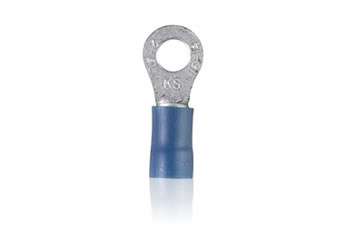madjack



 You work from experience and I do hearsay....
You work from experience and I do hearsay....  Well, experience trumps hearsay!
Well, experience trumps hearsay! 



bdosborn wrote:You know, I never see those on 120V wires. I bet Chuck would know why.
Bruce





 I used those on my fuse box. I looked at things after reading your note and one problem I see is that the wire is so big that the box is gonna be awfully tight...so I'll probably use #12 solid and strap the wire down well so that it doesn't move... Now, if I do have a problem with it breaking etc, then I'll backtrack to your suggestion and get bigger boxes.
I used those on my fuse box. I looked at things after reading your note and one problem I see is that the wire is so big that the box is gonna be awfully tight...so I'll probably use #12 solid and strap the wire down well so that it doesn't move... Now, if I do have a problem with it breaking etc, then I'll backtrack to your suggestion and get bigger boxes.
Yes, Joanne - That's the industry standard way of making connections with stranded wire to recepticales which aren't designed for stranded wireJoanne wrote:If you have the #10 wire in hand and want to use it, maybe you should consider buying crimp-on ring connecters and use them to attach to whatever plug or switch you need.
bdosborn wrote:You know, I never see those on 120V wires. I bet Chuck would know why.
Bruce
While it's true that the screws are designed not to back all the way out (strictly as a convenience to the user) it doesn't 'damage' the outlet (or the screw for that matter) in any way to remove and reinstall them using ring terminalsChuck Craven wrote:On duplex outlets the screws can’t be removed with out damaging the outlet

Chuck Craven wrote:On duplex outlets the screws can’t be removed with out damaging the outlet.
Chuck
I agree with you there . . . . but you can legally use clamp type outlets with stranded wire, can't you? No need for a ring terminal if all your outlets are of ther clamp type . . . . you just can't (legally) use stranded wire under a screw head, so on those types of outlets, you would need a ring terminalChuck Craven wrote:Will I guess the cheaper outlets you can get away with removing the screws. I normally use Hubble outlets, they rivet the clamp plate on the end of the screws. When you take out the screws the clamp plate breaks off
Users browsing this forum: No registered users and 40 guests